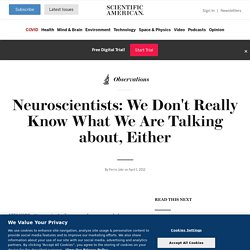

Juha Wahlstedt on Twitter: "Bacillus Christmas Tree #Medlab #Microbiology #Science. Bacillus Christmas Tree. La découverte d’un ado de 15 ans chamboule les théories d’Einstein. Sciences : Un Français de 15 ans publie un article dans Nature. Neil Ibata, en stage à l'observatoire de Strasbourg avec son père, a été le premier à déceler la rotation de galaxies naines autour d'Andromède grâce à un programme informatique qu'il avait mis au point.

«Ce n'est pas tous les jours qu'on a l'occasion de publier dans Nature , j'imagine.» À seulement 15 ans, Neil Ibata vient de réaliser le rêve de beaucoup de chercheurs: co-signer un papier dans l'une des plus prestigieuses revues scientifiques au monde. «Je venais de faire un stage pour apprendre le langage informatique Python», raconte au Figaro l'élève de 1e S du lycée international des Pontonniers à Strasbourg. «Mon père m'a proposé de mettre en pratique ce que j'avais appris pour visualiser des données qu'il avait rassemblées depuis plusieurs années avec son équipe sur la galaxie Andromède.» Désolé, cette vidéo n'est pas disponible sur votre mobile Le jeune Neil Ibata, s'il est très fier de voir son nom associé à un papier d'une telle importance, garde cependant les pieds sur terre.
IBM met au point un supercalculateur exaflopique… tourné vers les étoiles. Vous êtes ici : Accueil / Infrastructure / IBM met au point un supercalculateur exaflopique… tourné vers les étoiles IBM et Astron vont travailler sur une nouvelle génération de supercalculateurs exaflopiques.

Le but est d’en équiper le futur radiotélescope SKA, le plus puissant jamais conçu. Large Hadron Collider turned back on. Cynorrhodon: Voilà une fort bonne chose... CERN manager weighs gnome. Scientists solving the mystery of human consciousness « Biosingularity. Awakening from anesthesia is often associated with an initial phase of delirious struggle before the full restoration of awareness and orientation to one’s surroundings. Scientists now know why this may occur: primitive consciousness emerges first. Using brain imaging techniques in healthy volunteers, a team of scientists led by Adjunct Professor Harry Scheinin, M.D. from the University of Turku, Turku, Finland in collaboration with investigators from the University of California, Irvine, USA, have now imaged the process of returning consciousness after general anesthesia.
The emergence of consciousness was found to be associated with activations of deep, primitive brain structures rather than the evolutionary younger neocortex. These results may represent an important step forward in the scientific explanation of human consciousness. Broad Band X-Ray Telescope (BBXRT) Space Shuttle COLUMB. The threat of intelligent space dinosaurs. Chirality is an interesting concept.

The best way to explain it quickly is an analogy to being left-handed or right-handed. Molecules don't have hands, but they do have an inherent orientation that can be compared to having a dominant hand that you do most of your work with. Sugars are mostly right-handed. Amino acids: Left-handed. But here's where things get weird: It doesn't have to be that way. All of this backstory is important so that I can tell you about the most hilarious non sequitur I've encountered in 2012. Chemist Ronald Breslow has a new paper out in the Journal of the American Chemical Society, where he talks about why chirality might be the way it is. In fact, in related news, there's another paper out suggesting that Earth could have paid that gift of life forward, with potentially microbe-and-molecule-laden rocks from here traveling far into interstellar space.
Prior to 250 million years ago, the synapsids—our ancestors and relatives—were the dominant creatures on land. Certain coral species may be better adapted to deal with ocean acidification. Corals may be better able to cope with ocean acidification than previously believed, according to new research published in Nature Climate Change, providing a glimmer of hope for the future of coral reefs.

As more carbon dioxide enters the atmosphere from the burning of fossil fuels, more carbon dioxide is dissolved in the ocean, lowering the pH of the water. This process, known as ocean acidification, is occurring at an unprecedented rate. This is causing problems for shell-building organisms, and it raises concerns for corals. Can corals and their symbiotic algae have the ability to adapt or acclimate to such rapid changes in ocean chemistry?
Viking robots found life on Mars, scientists say - Technology & science - Space - Discovery.com. Mechanical laser-cut gear fractal computer. Brent Thome, a computer scientist in San Francisco, is building a mechanical computer out of beautiful, laser-cut gears that will compute and draw fractals.

He's documenting as he goes in a fascinating blog, in which he also recounts his adventures with kinetic wooden sculpture. I've been working on this for a while now. Its a wooden computer that computes continuous self-similar fractals. I'll post the working model of a general computer implemented in gears as soon as I get some laser cutter time to complete the counter/comparator unit. Anyway, here is some pictures of the core assembly.
Fractal Clockwork (via Make) 22 Secondes. On the history of books bound in human flesh. Entre le latin des sciences d’autrefois et l’anglais scientifique d’aujourd’hui : le « Latino sine flexione » de Guiseppe Peano. Le latin cesse d’être la langue de la science d’une manière progressive : Newton publie encore les Principia en latin (Philosophiae Naturalis Principia Mathematica) en 1687 mais au 18e siècle, c’est le français qui est la langue de la diplomatie et du savoir comme en témoigne le concours de la Classe des Belles lettres de l’Académie de Berlin pour son prix de 1784 « Qu’est-ce qui a rendu la langue française la Langue universelle de l’Europe ?

À quelle cause doit-elle cette préférence ? » Ce concours est remporté l’année suivante par Rivarol avec son Discours sur l’universalité de la langue française. Au 19e siècle, la science se développe, le nombre des « savants » va croissant et chaque pays publie dans sa langue, ce qui rend la situation inextricable.[] Quelle solution envisager ? Shannon's Mathematical Theory of Communication Applied to DNA Sequencing. One of the great unsung heroes of 20th-century science is Claude Shannon, an engineer at the famous Bell Laboratories during its heyday in the mid-20th century.

Shannon’s most enduring contribution to science is information theory, which underpins all digital communication. In a famous paper dating from the late 1940s, Shannon set out the fundamental problem of communication: to reproduce, at one point in space, a message that has been created at another. The message is first encoded in some way, transmitted, and then decoded. Shannon’s showed that a message can always be reproduced at another point in space with arbitrary precision provided noise is below some threshold level.
He went on to work out how much information could be sent in this way, a property known as the capacity of this information channel. Shannon’s ideas have been applied widely to all forms of information transmission with much success. That type of thinking is ongoing, revolutionary, and still in its early stages. Neuroscientists: We Don’t Really Know What We Are Talking About, Either. (Credit: Adapted from image by John A Beal, Wikimedia Commons) NEW YORK—At a surprise April 1 press conference, a panel of neuroscientists confessed that they and most of their colleagues make up half of what they write in research journals and tell reporters.

“We’re always qualifying our conclusions by reminding people that the brain is extremely complex and difficult to understand—and it is,” says Philip Tenyer of Harvard University, “but we’ve also been a little lazy. It is just easier to bluff our way through some of it. That’s one perk of being a respected neuroscientist—you can pretty much say whatever you want about the brain because so few people, including other neuroscientists, understand what you’re talking about in the first place. As long as you throw in enough jargon, it sounds science-y and legit and stuff.” Mind-boggling XKCD April Fools comic : comics. Ferroux.
2VaoI.